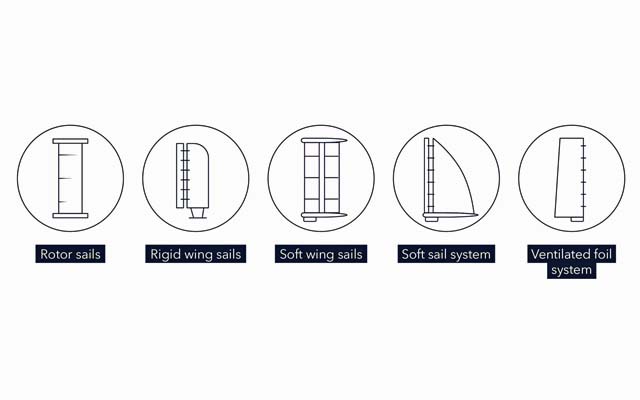DNV has released a new Recommended Practice (RP) to assess the performance of Wind-Assisted Propulsion Systems (WAPS).
The new RP has been developed to provide a basis for reliably determining the ability of different WAPS technologies to deliver efficiency gains when installed onboard, accelerating the maritime industry’s journey towards a more sustainable future. With some 50 systems now in operation, WAPS have emerged as a promising solution for the maritime industry to realise fuel savings and emissions reductions. And as shipping’s transition to more sustainable but higher cost fuels accelerates, these efficiency gains can translate into significant cost savings.
Johanna Tranell, DNV Maritime WAPS Performance Assessment Lead, said: “At DNV we have been working on WAPS installations for several years and were the first classification society to publish rules and standards to enable their deployment. But for energy efficiency technologies like WAPS to break through to wider deployment, we need the industry to be confident in their effectiveness. The new RP establishes a practical, reliable standard that helps us generate transparent, verifiable data, building trust in the potential of these systems.”
DNV’s Recommended Practice proposes an on/off methodology – engaging and disengaging the WAPS system under similar operational and environmental conditions – to measure performance. This provides a robust framework that, combined with independent third-party verification, delivers actionable insights for shipowners and operators looking to install WAPS on their vessels.
Hans Anton Tvete, Business Development Manager, DNV Maritime, said: “Industry collaboration and consensus is vital as we work towards a greener future for shipping,” says . “And to build consensus we need a shared understanding – backed by standardised, verifiable data. By working together to shape this new RP, the maritime community can ensure that these solutions are truly making an effective contribution to our decarbonisation.”
DNV urges all stakeholders, including shipowners, operators, technology providers, academia and regulators, to review and contribute feedback on the RP. DNV invites interested parties to submit their comments and insights.
Image: WAPS comparison (source: DNV)



